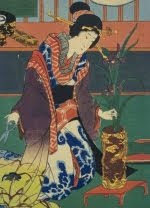I'll be doing an ikebana installation at Kunstland 2012, an informal art festival held deep in the Norwegian forest in Söndre Land, 120 km North of Oslo. If you happen to be around on August 4th I hope you'll come and check it out.
The ikebana installation will be in a space on the second floor of an old barn. I've been told it's very rough and dark so this is going to be exciting. I love this kind of challenge and I've started planning - so I think it's going to work. Hopefully I'll be able to find suitable plant materials from the local area.
Artists:
Jorunn Irene Hansvik (N) Sculpture
Roar Werner Eriksen (N) Painting
Cripsin Gurholt (N) Livephoto
Stein Koksvik (N) Drawing
Lennart Persson (S) Ikebana
Yngvar Larsen (N) Installation
Markus Brendmoe (N) Drawing and painting
Cecilie Telle Nakata (UK)
Hiro Nakata (J)
Erland Edenholm (S) Video
Turid Gyllenhammar (N) Installation
Artists:
Jorunn Irene Hansvik (N) Sculpture
Roar Werner Eriksen (N) Painting
Cripsin Gurholt (N) Livephoto
Stein Koksvik (N) Drawing
Lennart Persson (S) Ikebana
Yngvar Larsen (N) Installation
Markus Brendmoe (N) Drawing and painting
Cecilie Telle Nakata (UK)
Hiro Nakata (J)
Erland Edenholm (S) Video
Turid Gyllenhammar (N) Installation
Kunstland is arranged by the Norwegian artists Markus Brendmoe and Yngvar Larsen. This slide show is from last years Kunstland festival (I was not there). A beautiful and fascinating location. Photo credit: Yngvar Larsen.















